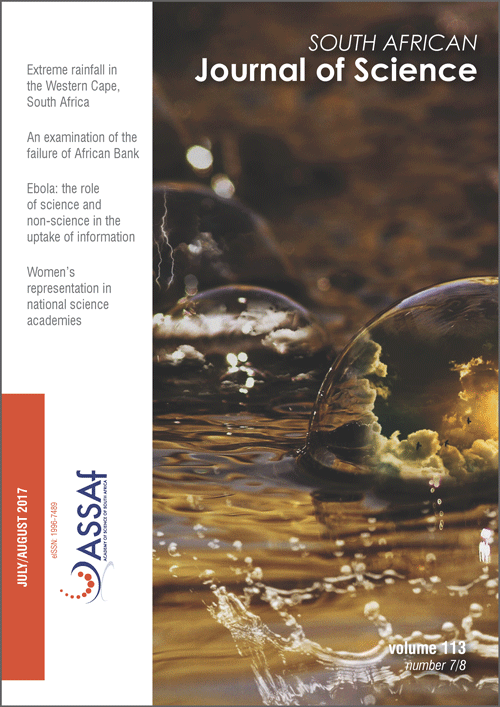Women’s representation in national science academies: An unsettling narrative
DOI:
https://doi.org/10.17159/sajs.2017/20170050Keywords:
membership, women, representation, academy governance, gender-disaggregated dataAbstract
Science academies are well placed to contribute towards strengthening of national systems of innovation through advocating for an increased participation of girls and women in science. To successfully do so, academies would need to overcome challenges faced with regard to women’s representation in their own ranks and women’s resultant full participation in the activities of national science academies. We collected baseline data on the representation of women scientists in the membership and governance structures of national science academies that are affiliated with IAP: the Global Network of Science Academies. Women academy members remained far below parity with men, given that women’s membership was typically about 12%. Women members were better represented in the social sciences, humanities and arts but the corresponding shares rarely exceeded 20%. In the natural sciences and engineering, women’s membership remained well below 10%. On average, the largest share of women members (17%) was associated with academies in Latin America and the Caribbean. The average share of women serving on governing bodies was 20%. To change this unsettling narrative, the importance of academies of science annually collecting, analysing and reporting gender-disaggregated data on membership and activities is highlighted as a key recommendation. Several aspects of women’s representation and participation in national science academies are highlighted for further investigation.
Significance:- Demonstrates under-representation of women in national science academies.
- Reports on results of the first gender-disaggregated survey on membership and governance of national science academies, globally.
- Underscores the importance of regular collection, analysis and reporting of gender-disaggregated data in the science sector.
Published
Issue
Section
License

All articles are published under a Creative Commons Attribution 4.0 International Licence
Copyright is retained by the authors. Readers are welcome to reproduce, share and adapt the content without permission provided the source is attributed.
Disclaimer: The publisher and editors accept no responsibility for statements made by the authors
How to Cite
- Abstract 2090
- PDF 1461
- EPUB 234
- XML 271










.png)